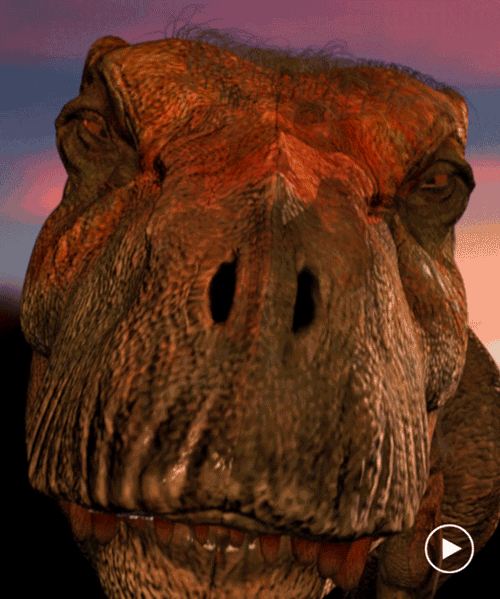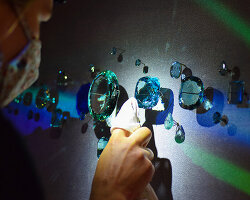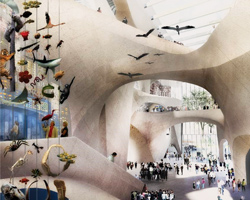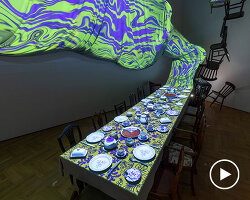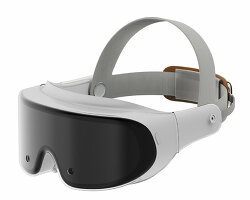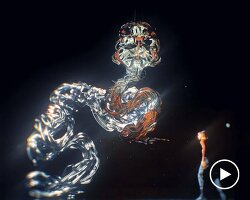everyone knows the mega-predator, tyrannosaurus rex, but do you know how they lived? or that t. rex hatchlings were fluffy, and more like turkeys than the killing machines they grew up to be? or that they had the rare ability to pulverize and digest bones?
opening on march 11, designboom previews the first major exhibition of the american museum of natural history’s 150th anniversary celebration, t. rex: the ultimate predator — a monumental show that introduces visitors to the entire tyrannosaur family and reveals the incredible story of the most iconic dinosaur in the world. the exhibition features life-sized models — including the most scientifically accurate representation of t. rex to date — fossils and casts, engaging interactives, and the museum’s first multiplayer virtual reality experience, created in collaboration with HTC VIVE arts.
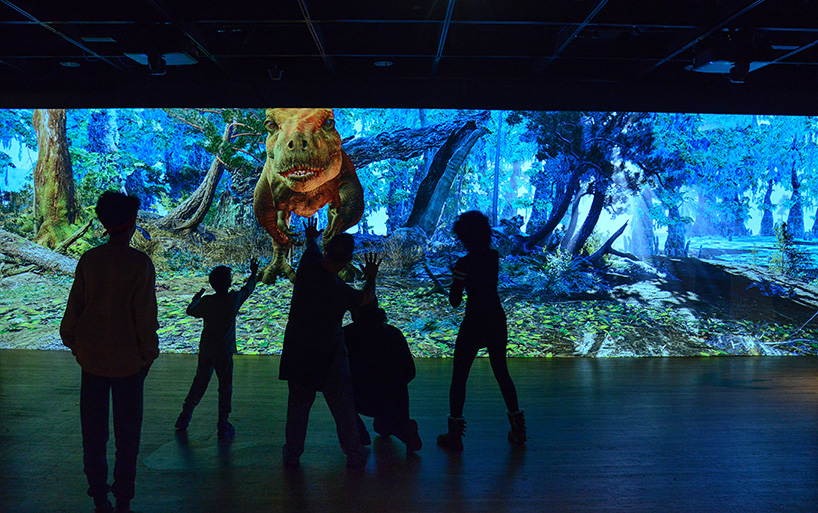
visitors encounter a massive animated projection of a t. rex and its offspring in a late cretaceous setting. the huge dinosaur will react to visitors, leaving them to wonder, ‘did that t. rex see me?’
image © AMNH /r. mickens
having discovered and mounted the first t. rex on display in the world, the american museum of natural history has a special relationship with the dinosaur. the first t. rex skeleton was discovered in 1902 by the museum’s legendary paleontologist and fossil hunter, barnum brown, and the museum boasts one of the few original specimens of t. rex on public display. its paleontology collection is one of the most extensive and diverse in the world, with specimens that have led to stunning discoveries — including the identification of the first dinosaur eggs and early evidence of dinosaur feathers. in addition to showcasing the museum’s vast archive related to the dinosaur, t. rex: the ultimate predator also highlights a number of recent discoveries about the tyrannosaur group.
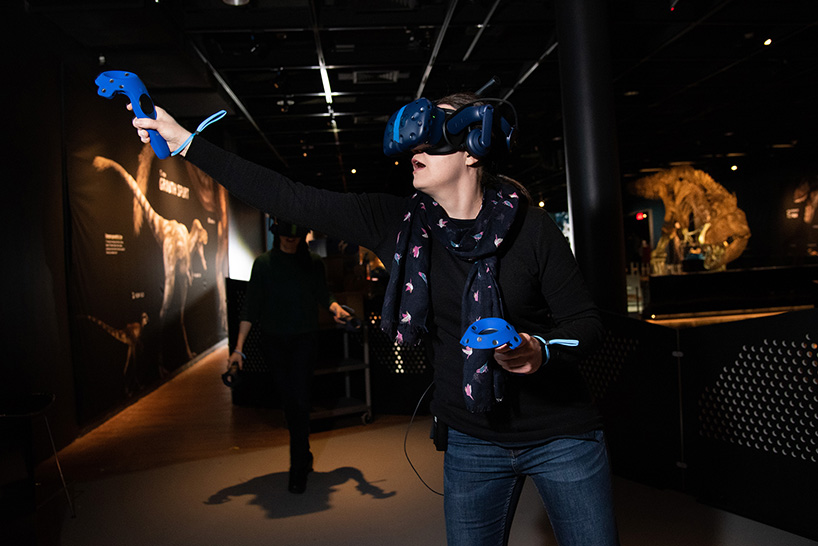
the museum is presenting t. rex: skeleton crew, its first interactive, multi-player virtual reality experience, created in collaboration with HTV vive. the facilitated experience will ‘transport’ up to three players at a time to a space similar to the museum’s hall of saurischian dinosaurs, where they will team up to help build a t. rex skeleton bone by bone
image © AMNH/d. finnin
visitors to t. rex: the ultimate predator will encounter a massive life-sized model of a t. rex with patches of feathers — the definitive representation of this prehistoric predator. furthermore, the exhibition debuts a monumental new way for visitors to engage with history: its first interactive, multi-player virtual reality experience. t. rex: skeleton crew is a five-minute experience that ‘transports’ up to three players at a time to a space similar to the museum’s hall of saurischian dinosaurs. in VR, the team are able to build a t. rex skeleton bone by bone and, once all of the bones are in place, can watch as the t. rex comes to life in marshland that is now montana, its home 66 million years ago.
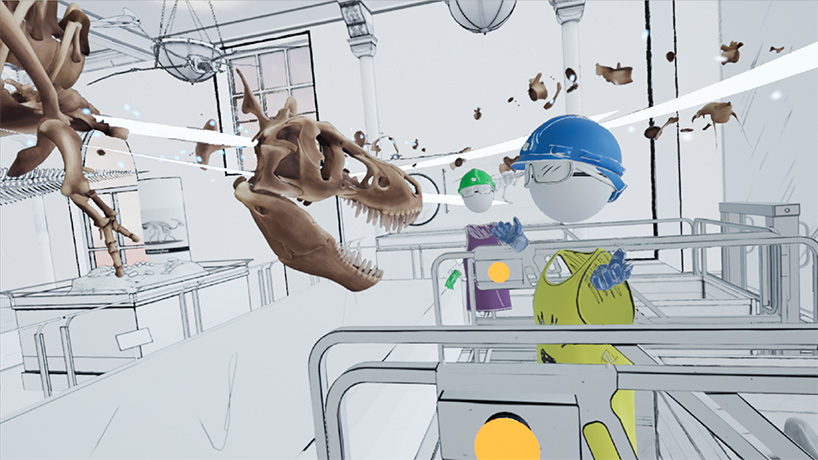
still from the virtual reality experience, t. rex: skeleton crew
image © AMNH
the virtual component of t. rex: skeleton crew has been created in collaboration with HTC VIVE, a virtual reality headset developed by consumer electronics company HTC. ‘through VR, visitors can engage with the subject of the exhibition in an exciting, in-depth way that enriches their knowledge and leaves a lasting memory for years to come,’ said victoria chang, director of HTC VIVE arts. VIVE arts enables and preserves cultural heritage for the world with digital innovation in the arts. ‘vive is proud to be a partner with the american museum of natural history, one of the world’s most innovative and forward-thinking museums. this remarkably engaging VR project harnesses the power of premium VR, bringing visitors closer to the anatomy, scale, and majesty of t. rex like never before.’
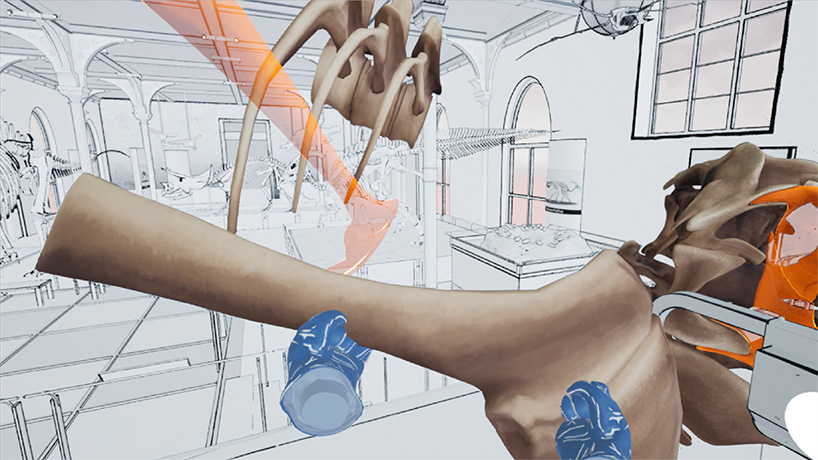
still from the virtual reality experience, t. rex: skeleton crew
image © AMNH
‘virtual reality is a magical realm in which our perceptions of time and space are suspended,’ said vivian trakinski, the museum’s director of science visualization. ‘in virtual reality, nothing is too small, too big, too fast, too slow, too distant, or too long ago to be appreciated. we hope this technology will let our visitors experience the most fantastic and inaccessible realms of nature.’
meanwhile, an at-home version of t. rex: skeleton crew will launch on viveport, HTC VIVE’s global platform and app store, for VIVE owners in summer 2019.
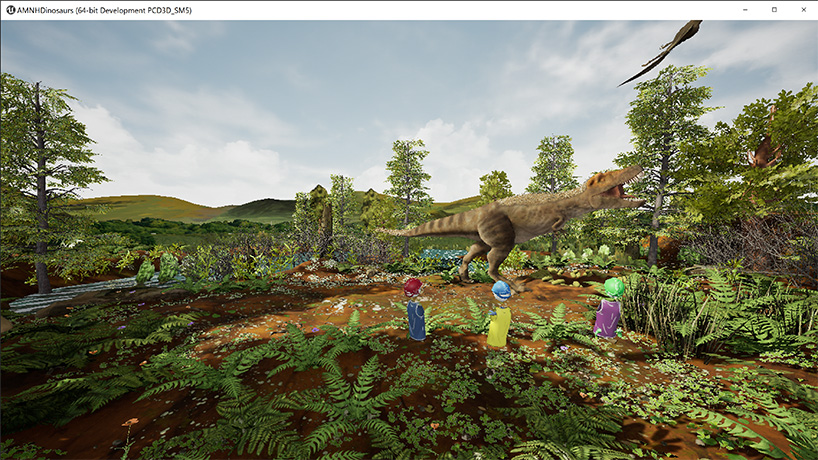
still from the virtual reality experience, t. rex: skeleton crew
image © AMNH
also as part of the exhibition, visitors find a 32-foot-long animated projection in which t. rex hatchlings scamper about and a life-size t. rex tracks their movements within a cretaceous-age setting. the huge dinosaur reacts to visitors’ placement in the room, leaving them to wonder, ‘did that t. rex see me?’.
other interactive elements include a ‘roar mixer’, where visitors can imagine what t. rex may have sounded like by blending sounds from other animals; a shadow theater featuring a floor projection of an adult t. rex skeleton coming to life; a tabletop ‘investigation station’ comprising fossil casts, with virtual tools — including a CT scanner, measuring tape, and a microscope — to learn more about what such specimens can reveal to scientists about the biology and behavior of t. rex.
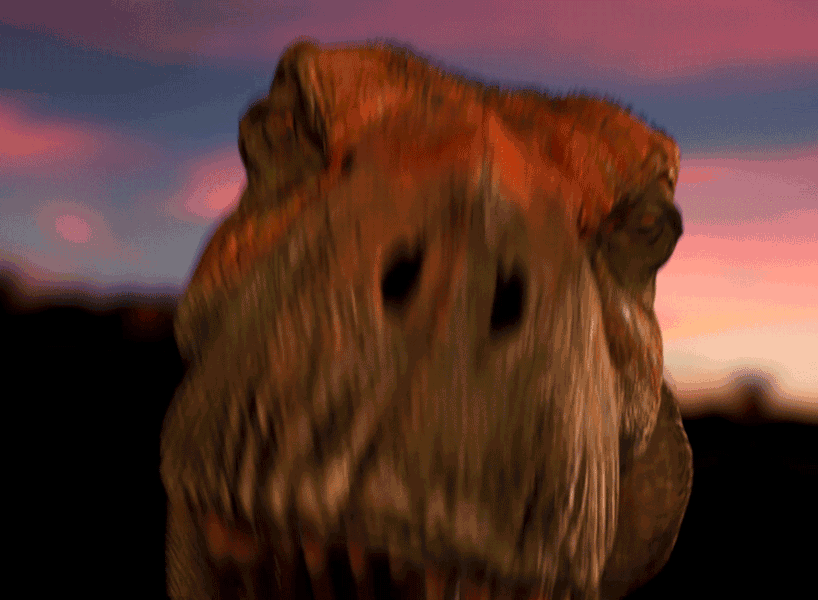
AMNH/r. peterson / © AMNH
while a full-scale reproduction of the t. rex fossil skeleton remains on display in the museum’s hall of saurischian dinosaurs, the exhibition’s massive life-size adult model shows what the dinosaur was like in the flesh, based on the most up-to-date findings. new research on this hunter’s senses show that keen vision, smell, and hearing made it very hard for this predator’s prey to avoid detection. built to kill, a t. rex could bite with about 7,800 pounds of force — equivalent to the weight of three cars. on view is a fossil of one of these massive, banana-shaped teeth as well as a cast of a fossilized t. rex lower jaw demonstrating the constant replacement cycle of its fearsome teeth.
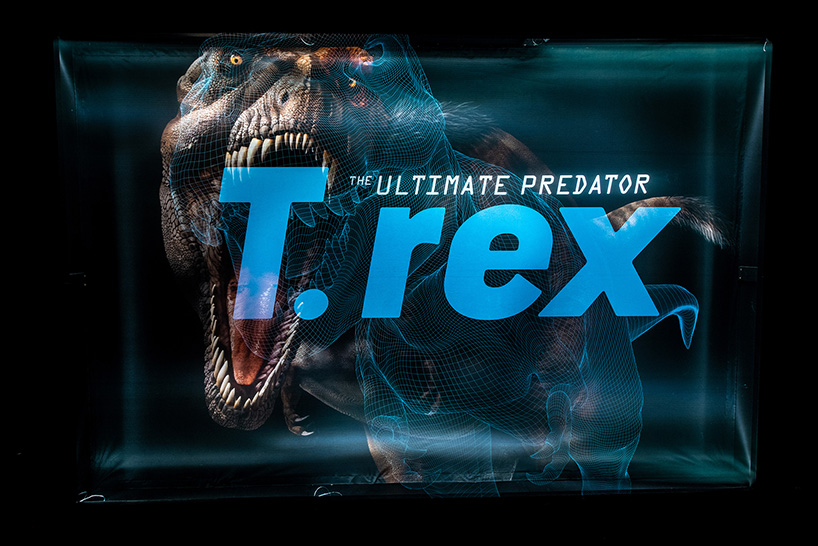
t. rex: the ultimate predator, on view at the american museum of natural history until august 9, 2020, will explore the entire tyrannosaur superfamily and reveal the amazing story of the most iconic dinosaur in the world through life-sized models—including the most scientifically accurate representation of t. rex to date—fossils and casts, engaging interactives, and the museum’s first multiplayer virtual reality experience
image © AMNH/d. finnin
ever wonder what t. rex looked like when it was born? the exhibit displays a life-size model of a four-year-old t. rex, which would have weighed about five times more than a four-year-old boy. the juvenile t. rex had relatively long arms, a slim body, and blade-like teeth that could cut through flesh. many scientists think that t. rex hatchlings were probably covered in fuzz, but adults were mostly covered in scales, likely with patches of display feathers concentrated on the head and tail.
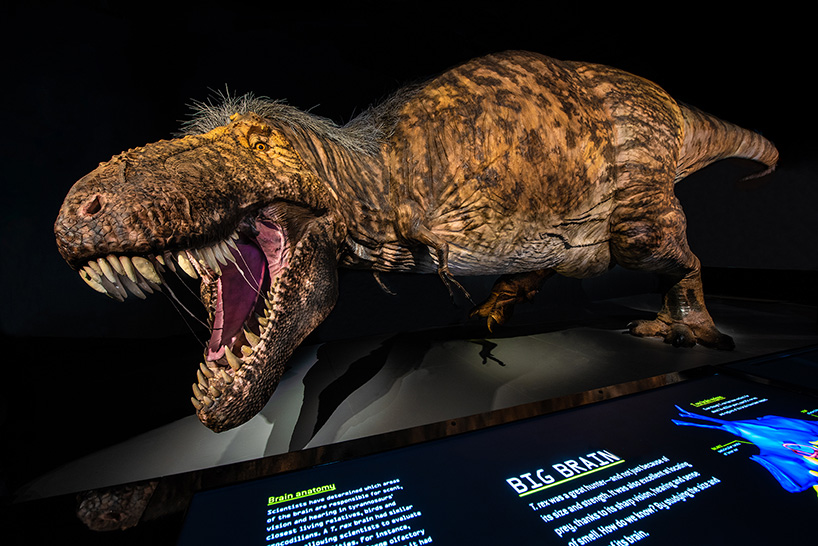
visitors to t. rex: the ultimate predator will encounter a massive life-sized model of t. rex with patches of feathers — the most scientifically accurate representation of t. rex to date
image © AMNH/d. finnin
t. rex: the ultimate predator showcases the full tyrannosaur story, a history which includes more than two dozen different species and spans more than 100 million years of evolution. t. rex appeared only at the very end of that period, between 66 and 68 million years ago.
exhibition visitors come face to face with life-size models of a number of tyrannosaurs, including: proceratosaurus bradleyi, the earliest known tyrannosaur that lived about 167 million years ago; dilong paradoxus, the first tyrannosaur found with fossilized feathers (discovered by exhibition curator mark norell and his colleagues in china); and xiongguanlong baimoensis, a mid-sized tyrannosaur that, when discovered in 2009, offered a rare glimpse of a transitional species between the smaller early tyrannosaurs and the later giants.
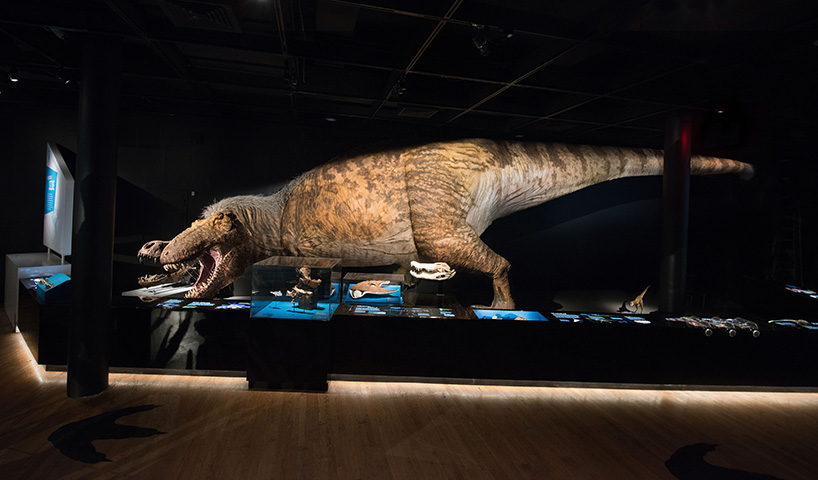
the life-sized model of t. rex at t. rex: the ultimate predator
image © AMNH/r. mickens
opening march 11, 2019, t. rex: the ultimate predator explores the life, history, abilities, and ancient relatives of tyrannosaurus rex, with a stunning, immersive virtual reality experience that shouldn’t be missed.
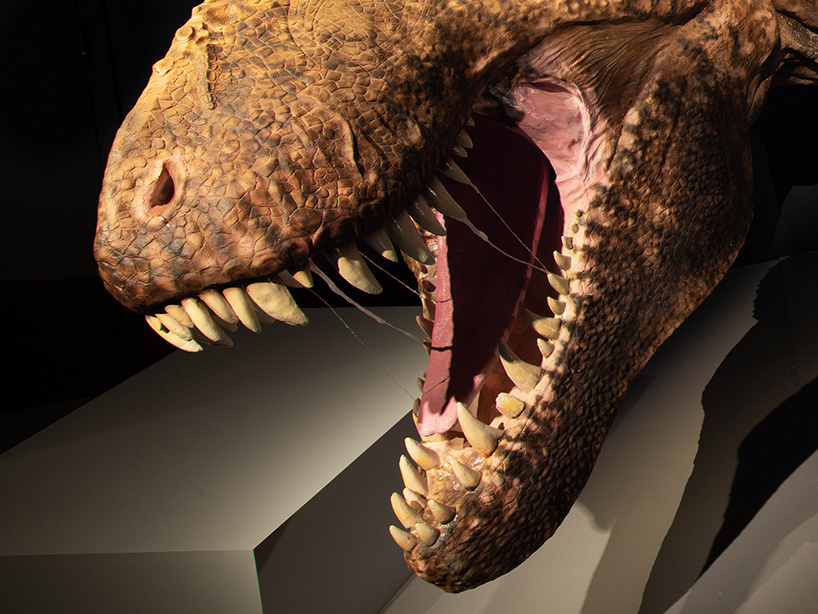
t. rex (detail)
image © AMNH/d. finnin
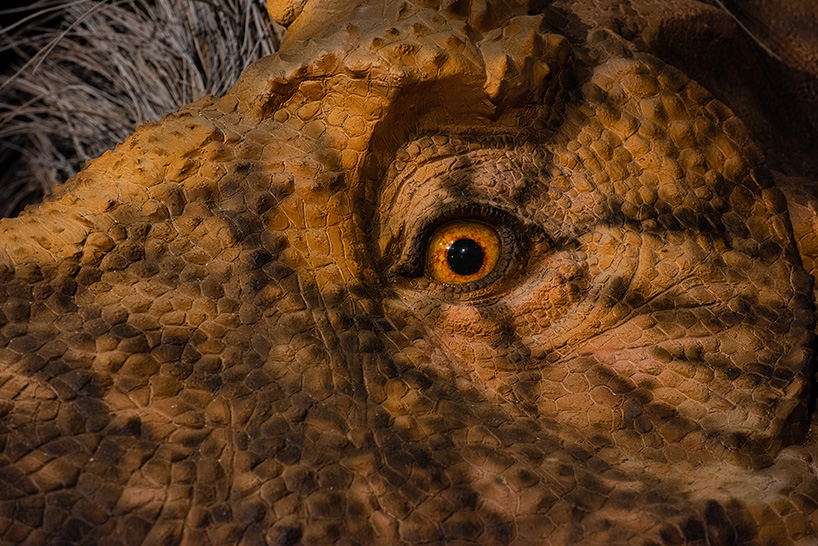
t. rex (detail)
image © AMNH/d. finnin
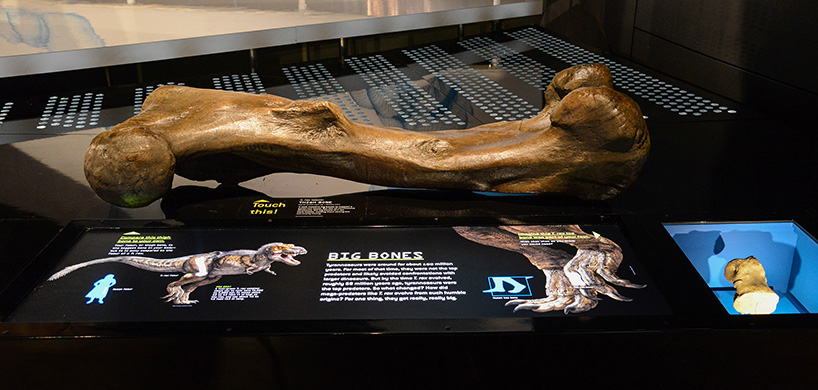
your femur, or thigh bone, is the biggest bone in your body—but it is puny compared to the femur of a t. rex.
exhibition visitors are invited to get up close and touch this cast of a t. rex femur
image © AMNH/r. mickens
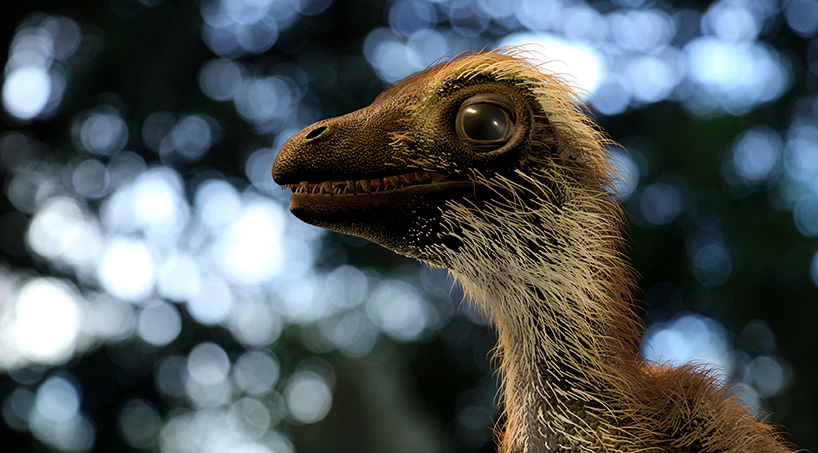
we usually think of t. rex as a monstrous killing machine, not a defenseless hatchling. but every t. rex was once a vulnerable youngster—and most never made it past age one
image by AMNH/r. peterson / © AMNH
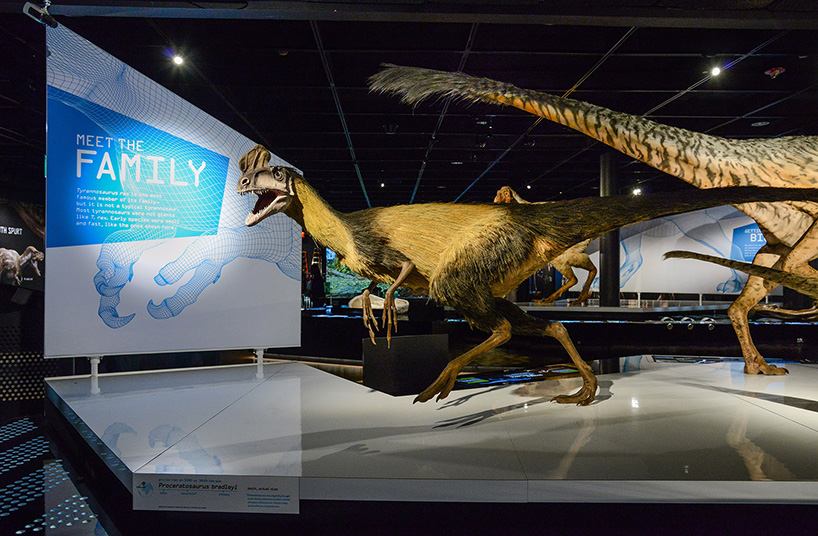
although t. rex lived 68 to 66 million years ago, the tyrannosaur group is about a hundred million years older than that. the earliest known tyrannosaur is proceratosaurus, which lived about 167 million years ago
image © AMNH/r. mickens
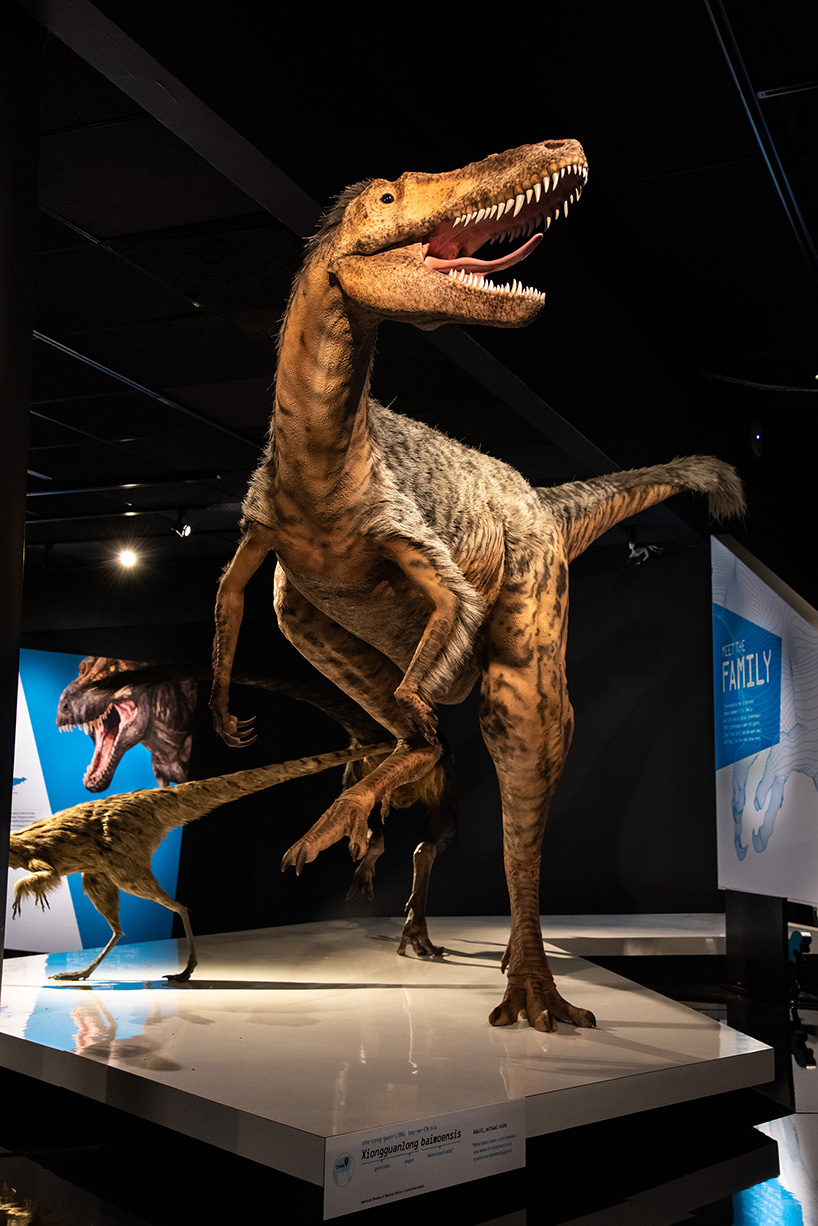
very few tyrannosaurs have been found that lived between 125 and 84 million years ago. so in 2009, scientists were excited to announce a new, mid-sized species that helped fill this 40-million-year gap. xiongguanlong baimoensis offers a rare glimpse of a mid-sized, transitional species between the smaller early tyrannosaurs and the later giants
image © AMNH/d. finnin
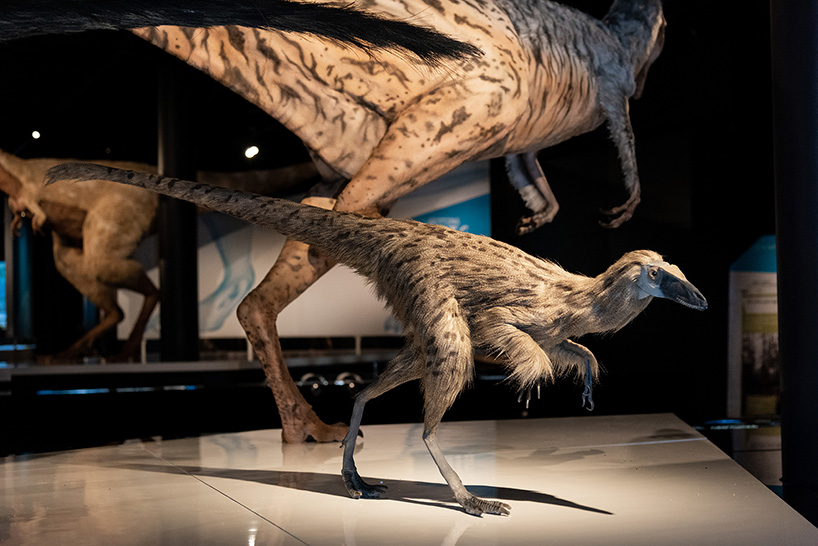
dilong paradoxus evolved about 40 million years after the earliest known tyrannosaur. like many early tyrannosaurs, its arms were relatively long, and capable of seizing small prey. dilong was the first tyrannosaur found with fossilized feathers. but scientists now think that feathers were present throughout the tyrannosaur family—and in fact date back to the first dinosaur
image © AMNH/d. finnin
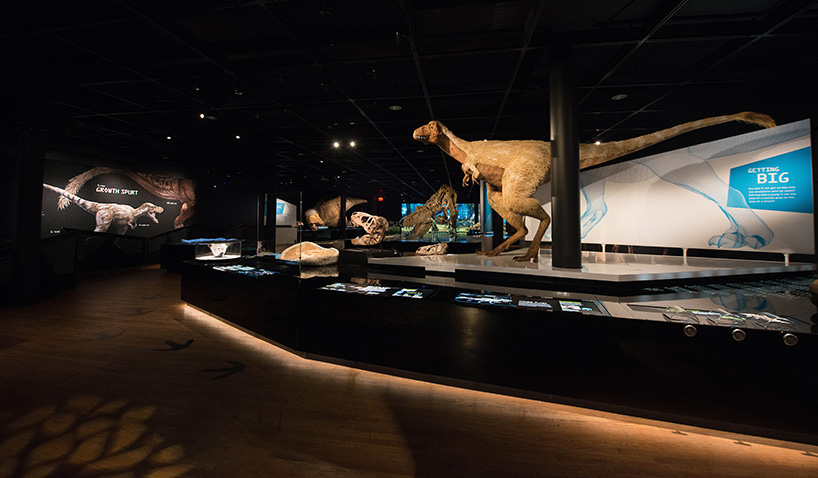
exhibition view of t. rex: the ultimate predator at the american museum of natural history until august 9, 2020
image © AMNH/d. finnin
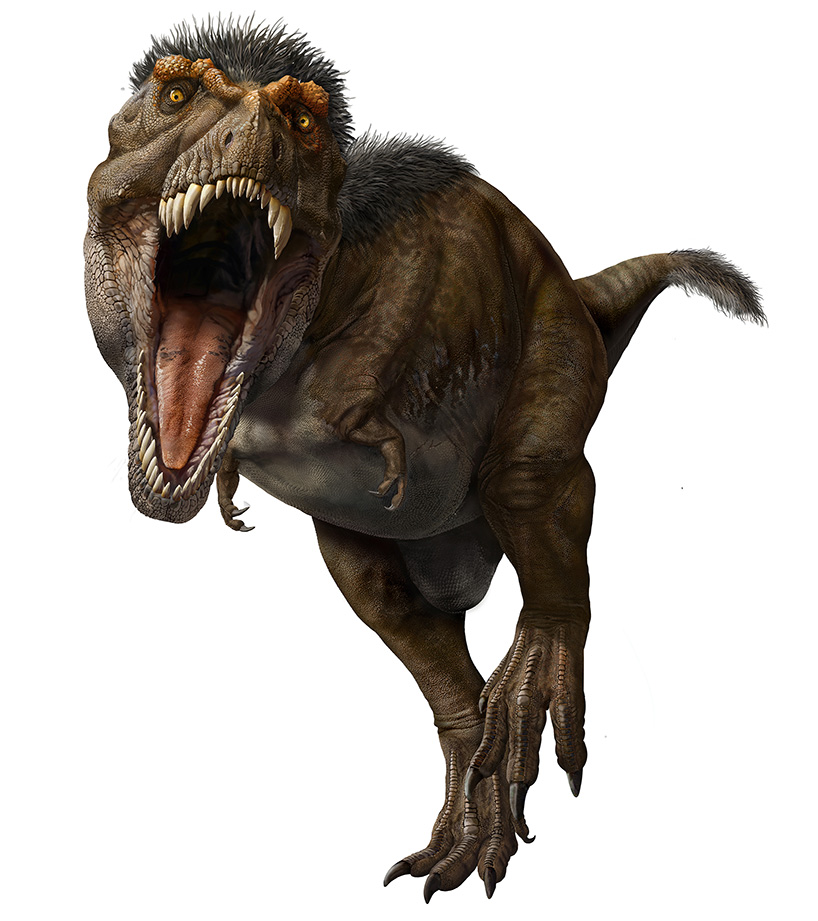
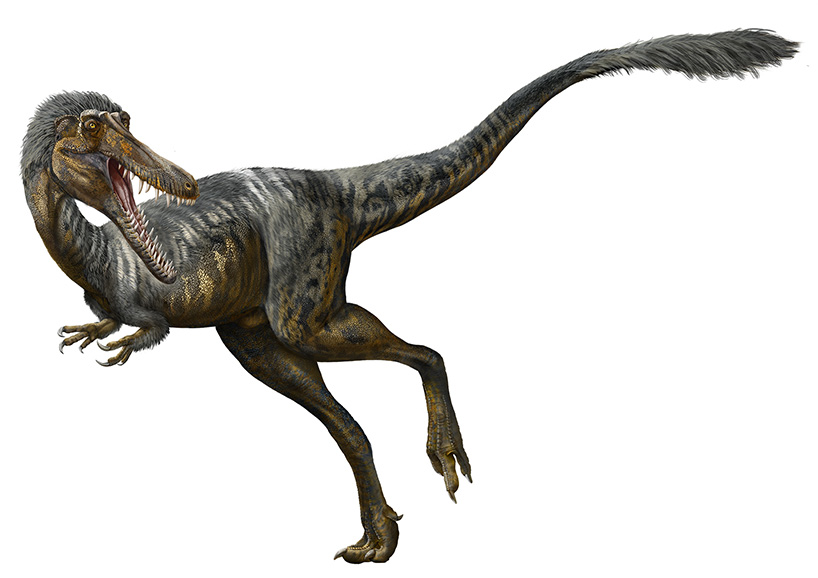
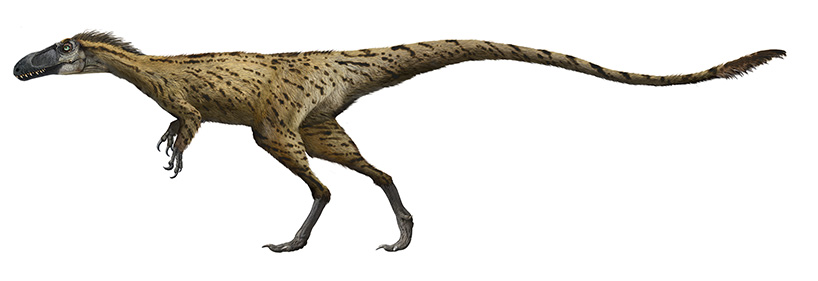

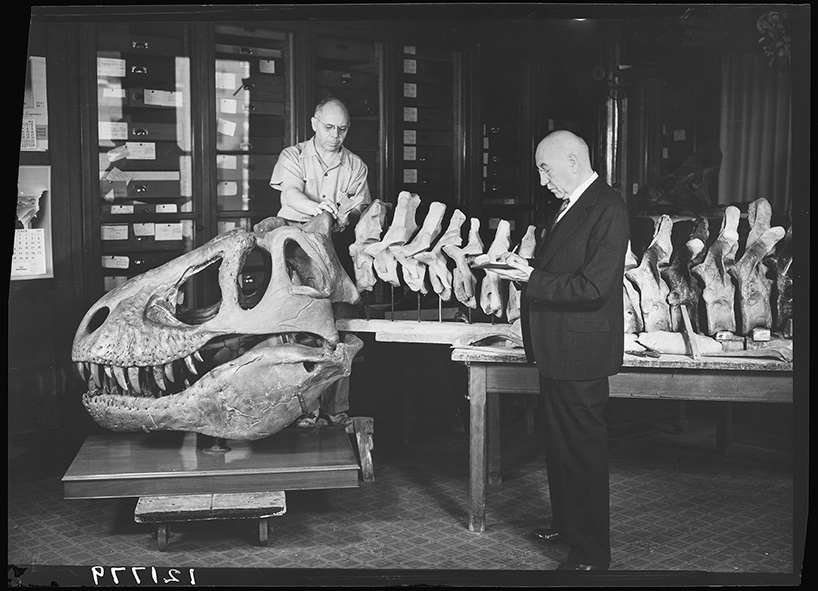
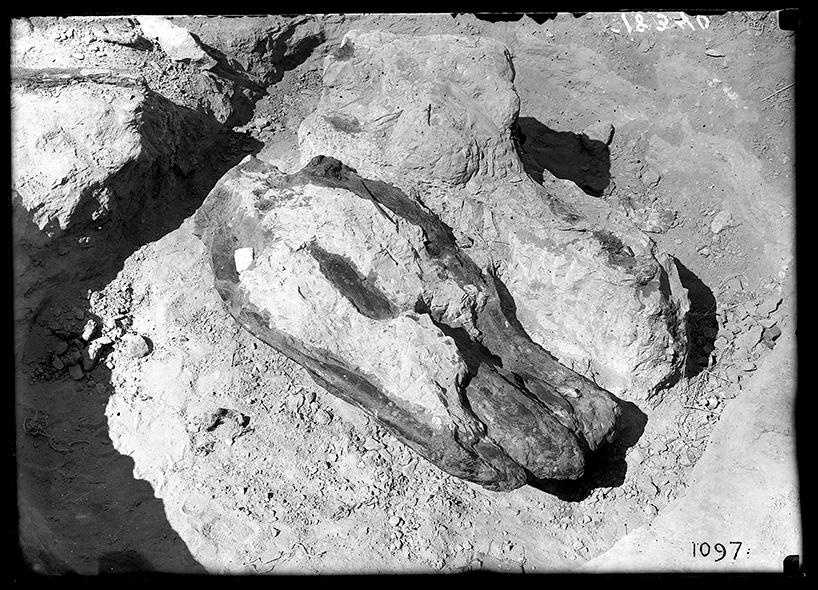
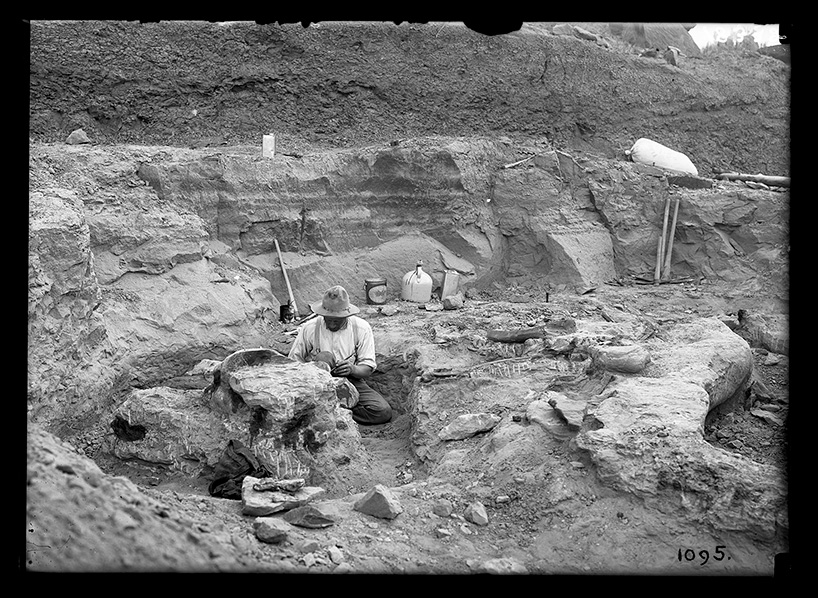
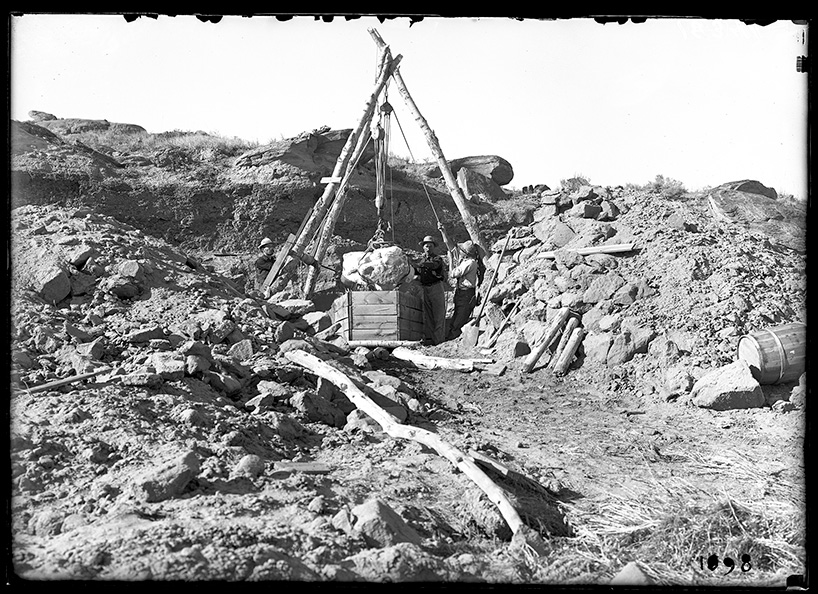
exhibition organization
t. rex: the ultimate predator is curated by mark norell, macaulay curator in the division of paleontology and the division’s chair. gregory erickson, professor of anatomy and vertebrate paleontology at florida state university, is a consultant for the exhibition. t. rex: the ultimate predator will open to the public starting monday, march 11, 2019. members will be able to preview the exhibition starting on friday, march 8, through sunday, march 10. the exhibition is designed and produced by the american museum of natural history’s award-winning exhibition department under the direction of lauri halderman, vice president for exhibition.
about the american museum of natural history
the american museum of natural history, founded in 1869, is one of the world’s preeminent scientific, educational, and cultural institutions. the museum encompasses 45 permanent exhibition halls, including those in the rose center for earth and space and the hayden planetarium, as well as galleries for temporary exhibitions. annual visitation has grown to approximately 5 million, and the museum’s exhibitions and space shows are seen by millions more in venues on six continents. the museum’s website, mobile apps, and massive open online courses extend its scientific research and collections, exhibitions, and educational programs to additional audiences around the globe.
about HTC VIVE arts
VIVE arts harnesses cutting-edge technology to transform the way culture is experienced, delivering one-of-a-kind projects that can be accessed anywhere in the world. its mission is to enable and preserve cultural heritage for the world, and to democratize creation with digital innovation in the arts. in doing so, VIVE arts’ addresses a diverse, global audience and contributes to the knowledge and enjoyment of our cultural heritage, both in museums and in the home.
american museum of natural history (AMNH) (5)
HTC VIVE arts (8)
virtual and augmented reality (200)
PRODUCT LIBRARY
a diverse digital database that acts as a valuable guide in gaining insight and information about a product directly from the manufacturer, and serves as a rich reference point in developing a project or scheme.
